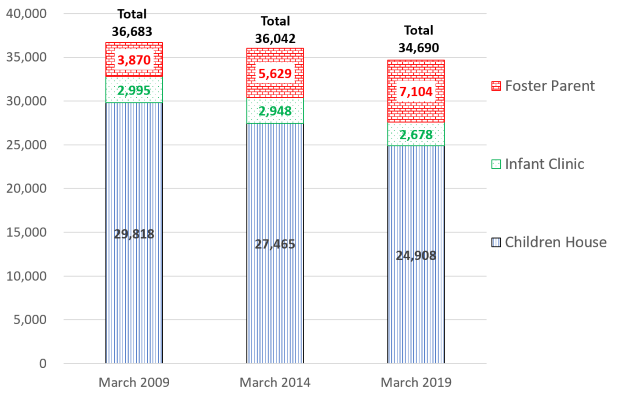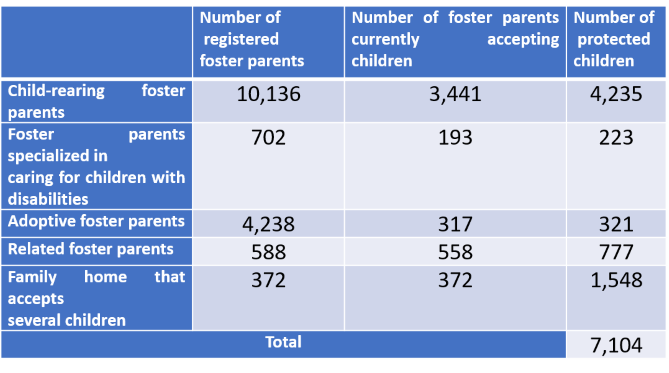Column Finance and the Social Security System 2020.11.09
【Aging, safety net and fiscal crisis in Japan】No.299: The role of the foster parent system is increasing
In this column series, Yukihiro Matsuyama, Research Director at CIGS introduces the latest information about aging, safety net and fiscal crisis in Japan with data of international comparison.
The Ministry of Health, Labour and Welfare has designated October the foster parent system enlightenment promotion month. It is a safety-net system in which the government entrusts children who require protection in the care of foster parents. Children who are put into this system have either no guardian or guardians deemed unfit for custody. There are three ways to protect such children: children’s houses, infant clinics, and foster parents. Whereas children’s houses and infant clinics are organizations run by social welfare corporations, foster parents are individuals who play the role of guardians.
As shown in Figure 1, while the number of protected children decreased from 36,683 in March 2009 to 34,690 in March 2019, reflecting the declining birthrate, the number of children in the foster parent system increased from 3,870 to 7,104 in the same period. This is the result of the government’s efforts to promote foster parents based on the idea that a child should grow up in a family environment than in a group setting such as a children’s house. Table 1 shows the types of foster parents and the number of protected children in March 2019. In addition to the basic benefits of JPY 90,000 (US$ 859) per healthy child and JPY 141,000 (US$ 1,330) per disabled child, the government provides foster parents with subsidies—food, clothing, medical, employment, and university entrance allowances.
Figure 1 The number of children recognized as needing protection and the number of children receiving each kind of protection

Source: Ministry of Health, Labour and Welfare
Table 1 Types of foster parents and the number of protected children in March 2019

Source: Ministry of Health, Labour and Welfare
